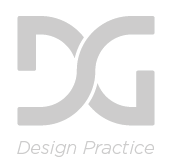For the second part of the message and delivery brief we were asked to design 3 high impact posters to deliver a message derived from our research.
I didn't know what message I wanted to put across from my initial research as there was a fairly broad range of stories and I wasn't sure which one to focus on. I spent some time looking at some of the stories that I had collected and thinking about which ones i would be able to develop effective visual outcomes for. I looked online at stories linking to some of the articles i had in my initial research. The one which I felt was the most interesting and also had the most content online was the story about climate change being a possible reason for the bush fires and Tony Abbott, the Australian Prime Minister, completely dismissing these claims.
I again collected together research based around this and displayed it in the same way as I did for my previous brief.
The PDF with this research on can be seen here.
I started thinking about ways that I could convey these issues visually. I looked at various different poster designs and different artists online for inspiration. This research can be seen here on my design context blog.
After looking at other artists I started thinking about the actual content of my poster designs. I wanted to use imagery that would catch peoples eye, be easily recognisable and not too abstract but at the same time look interesting and unique.
I noted down some of the key bits of information and some quotes that jumped out at me.
I wanted my posters to have some humour behind them and after narrowing down the vast amount of information I had I immediately got one idea. One of Abbotts quotes was 'Christina Figueres is talking through her hat.' Figueres is one of the leading minds behind 25 years of research that reinforce the theory that the increase in bush fires is due to climate change. This was just one of a number of ignorant and just plain stupid comments from the Australian Prime Minister and I wanted to make a joke of this.
I came up with this for a typographic poster. I used Arvo, experimenting with different weights and point sizes, eventually resolving this. This was just an initial design and thats why there is no colour. I looked at some of Abbotts other quotes and also statistics based around the fires and climate change. This information along with artist research allowed me to come up with some ideas. Some initial sketches and designs are shown below.
I drew out some of the ideas that were just in my sketchbook on A3 sheets to show during the crit as I have had quite poor feedback in previous crits when I have showed my ideas in my sketchbook as it is difficult for people to find the work to evaluate.
The feedback i received from the crits helped massively. The main points that I took from it were positive. People seemed to like my ideas but numerous people also told me that some of my posters were quite ambiguous. I wanted to make sure the message was clear so thought about changing the copy on the numbers poster as this was the one that people seemed to have the most trouble understanding.
I started developing my posters on Illustrator further. I had quite a lot of difficulties along the way and i experimented with some tools that I was not that familiar with such as the scatter brush. I also had to utilise guides during the design process quite a lot, especially with the type only poster.
I decided to use orange and black as my colours for the posters. I feel these will help to make the posters high impact as they are both very bold colours and the orange is very bright. this contrast of dark and light should work well. Also the colour orange gives off connotations of heat and fire which fits with the subject matter.
I hit a brick wall when it came to designing the trees on illustrator. It was too difficult to get an effective design using only the pen tool. I decided instead to draw out the trees by hand and then scan them in and render them further digitally.
I experimented with a few different typefaces and also looked at editing the type on illustrator to make it look smoke damaged and imperfect but I decided that the clean flat type worked better with the imagery. I decided upon Gotham Black as this is an incredibly simple legible and bold font which will catch peoples eyes immediately. I didn't want to use a decorative typeface as I felt this would distract away from the graphics.
I am really happy with the outcomes of the posters. I feel the message is communicated clearly without being too literal. The posters have a sarcastic humorous feel to them which I really like. I feel it will make the designs more memorable. I also like how ell the designs work as a set. I have displayed the final designs below but I intend to screen print them before hand in.





























































